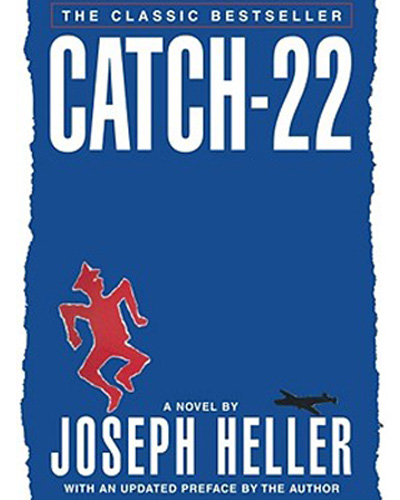
| Language | From $0.00 |
| Release Date | November 10, 1961 |
| Genre | Classics |
| Author | Joseph Heller |
| File Size | Simon & Schuster |
| Rating | (4.00) |
The novel follows the story of Captain John Yossarian, a bombardier stationed on the fictional island of Pianosa during World War II. Yossarian is desperate to survive the war and return home but is trapped by the infamous Catch-22: a bureaucratic rule stating that any pilot who is considered insane must be grounded, but any pilot who requests to be grounded due to insanity must be sane, as only a sane person would want to avoid flying dangerous missions.
Catch-22 was published in 1961, a time when the United States was experiencing a post-World War II economic boom and the beginnings of the Cold War. The novel reflects the disillusionment and cynicism of the time, as many Americans questioned the true purposes and consequences of the war.
Catch-22 is set during World War II, a conflict that resulted in the deaths of tens of millions of people and significant global upheaval. The novel explores the destructive and absurd nature of war, as well as the dehumanizing effects of military bureaucracy.
The novel was published during a time of great social and political change in the United States, with the civil rights movement, the rise of consumerism, and the growth of the military-industrial complex. Catch-22 captures the disillusionment and cynicism of this era and offers a biting critique of American society.
Catch-22 explores several significant themes, including the absurdity of war, the inefficiency of bureaucracy, and the human condition.
Heller employs a variety of literary techniques in Catch-22, including satire, dark humor, non-linear narrative, repetition, and allusion.
Catch-22 is a satirical novel that uses dark humor to expose the absurdity and cruelty of war and bureaucracy.
The novel is structured in a non-linear fashion, with events unfolding in a seemingly random order. This fragmented narrative structure serves to mirror the chaotic and disorienting nature of war.
Heller uses repetition and allusion to emphasize key themes and motifs throughout the novel, such as the Catch-22 paradox and the recurring phrase “There was only one catch, and that was Catch-22.”
Catch-22 has had a lasting impact on modern literature and popular culture, with the term “Catch-22” entering the English lexicon as a shorthand for a no-win situation or a paradoxical, self-defeating rule.
Catch-22 has influenced numerous authors, including Kurt Vonnegut, Thomas Pynchon, and Salman Rushdie, who have drawn on Heller’s satirical style and thematic concerns in their own works.
Catch-22 has been adapted into a successful film, a television series, and a stage play, and its themes and characters continue to resonate with contemporary audiences.
In conclusion, Catch-22 is a powerful and thought-provoking novel that captures the absurdity of war and the human condition. Its innovative narrative techniques and biting satire have left a lasting impact on literature and popular culture. Catch-22 remains a relevant and insightful work that continues to challenge and inspire readers today.